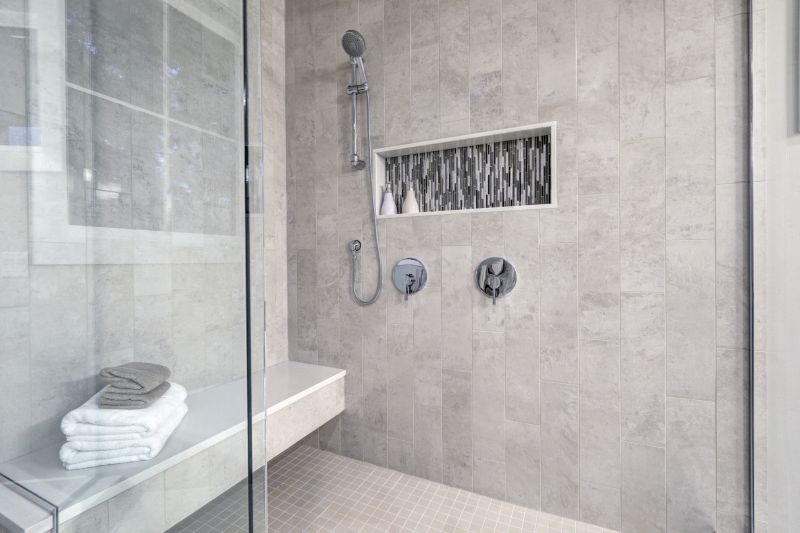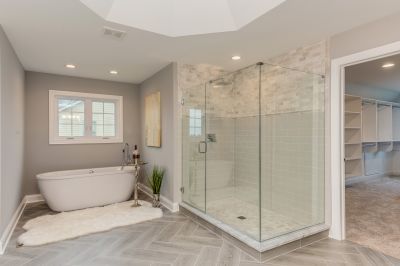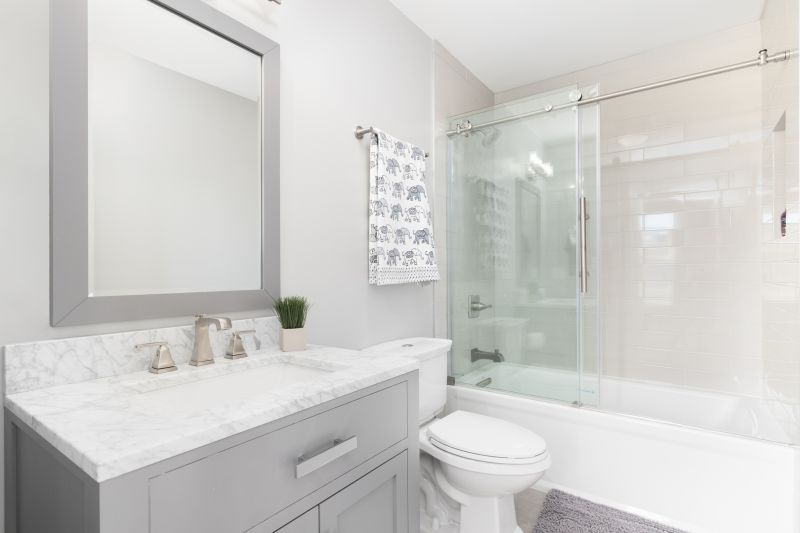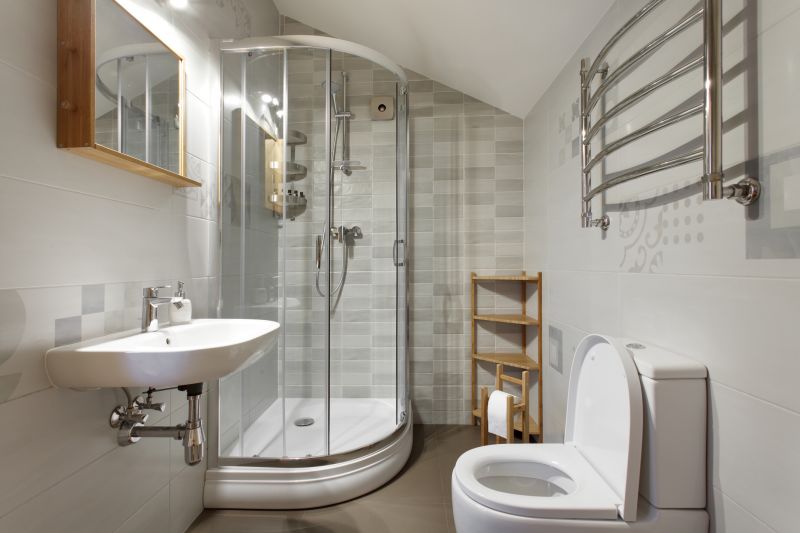Small Bathroom Shower Design Ideas to Save Space
Designing a small bathroom shower requires careful consideration of space, functionality, and style. Efficient layouts maximize limited square footage while maintaining comfort and accessibility. Common configurations include corner showers, alcove designs, and sliding door setups, each offering unique benefits suited to compact spaces. Proper planning ensures that movement is unrestricted and that storage solutions are integrated seamlessly into the design.
Corner showers utilize space efficiently by fitting into the corner of a small bathroom. These layouts often feature a quadrant or neo-angle design, providing a spacious feel without occupying much room. They are ideal for maximizing floor space and can be paired with glass enclosures to enhance openness.
Walk-in showers offer a sleek, accessible option for small bathrooms. They typically feature a single glass panel or open entrance, eliminating the need for doors and reducing visual clutter. This layout enhances the perception of space and allows for flexible placement of fixtures and storage.

Compact shower designs often incorporate creative use of space, such as built-in niches and corner shelves, to optimize storage. Curbless entries are also popular for a seamless look and easier access, especially in tight quarters.

Glass panels open up the visual space, making small bathrooms appear larger. Frameless designs are favored for their minimalist appeal and ease of cleaning, contributing to a clean and modern aesthetic.

Sliding doors are practical in small bathrooms where swinging doors may obstruct movement. They save space and can be customized with frosted or clear glass for privacy and style.

Combining shower and tub features or incorporating bench seating within a small shower enhances usability. These multi-functional layouts make the most of limited space without sacrificing comfort.
Effective small bathroom shower layouts often incorporate innovative storage solutions such as recessed niches, corner shelves, and wall-mounted dispensers. These features help maintain a clutter-free environment, essential in compact spaces. Selecting the right materials and finishes can also influence the perception of space; light colors and reflective surfaces tend to make the area feel larger and more open. Additionally, the choice of shower doors significantly impacts functionality and aesthetics. Frameless glass doors are a popular option for their sleek appearance and ease of maintenance, while sliding doors are preferred for their space-saving qualities.
| Layout Type | Advantages |
|---|---|
| Corner Shower | Maximizes corner space, offers versatile designs |
| Walk-In Shower | Accessible, enhances openness, minimal hardware |
| Neo-Angle Shower | Efficient use of space, stylish geometric look |
| Sliding Door Shower | Space-saving, easy to operate |
| Curbless Shower | Accessible, seamless transition, modern look |
| Shower-Tub Combo | Combines bathing and showering in small areas |
| Open Concept Shower | Creates a spacious feel, reduces visual clutter |
| Corner Bathtub with Shower | Provides bathing option without sacrificing space |
Designing small bathroom showers involves balancing style, practicality, and space constraints. Innovative solutions such as multi-functional fixtures, strategic placement, and the use of transparent materials can significantly improve the usability and appearance of the area. Attention to detail in selecting fixtures, finishes, and storage options ensures that the shower area remains functional and visually appealing. Proper planning and creative layout choices can transform a small bathroom into a comfortable and stylish space that meets daily needs efficiently.


